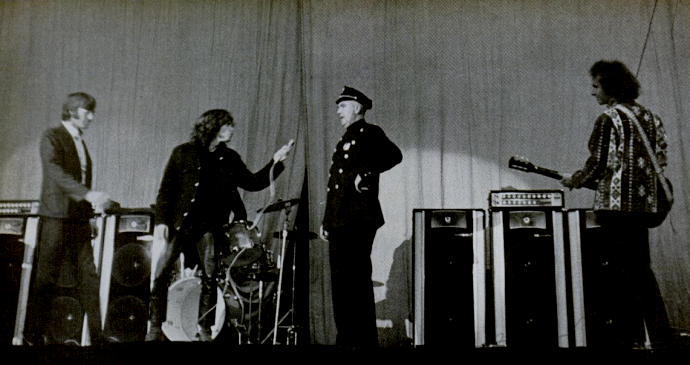 In a dramatic turn of events, Jim Morrison, the enigmatic frontman of The Doors, has been arrested and charged with public indecency, disorderly conduct, and lewd behavior following a controversial performance. The incident took place during the band’s concert at the Dinner Key Auditorium in Miami, Florida, on March 1, 1969. Now, the future of the 25-year-old rock icon hangs in the balance as he faces both legal consequences and potential career fallout.
In a dramatic turn of events, Jim Morrison, the enigmatic frontman of The Doors, has been arrested and charged with public indecency, disorderly conduct, and lewd behavior following a controversial performance. The incident took place during the band’s concert at the Dinner Key Auditorium in Miami, Florida, on March 1, 1969. Now, the future of the 25-year-old rock icon hangs in the balance as he faces both legal consequences and potential career fallout.
The trouble began when Morrison reportedly arrived at the venue intoxicated, setting the stage for a night of unpredictable behavior. Witnesses claim that throughout the performance, he cursed at the audience, delivered provocative speeches, and allegedly exposed himself in front of the crowd. Authorities accuse Morrison of engaging in obscene acts, including simulated sexual gestures, inciting the audience to undress, and flaunting lewd behavior.
Following the show, Miami police issued a warrant for Morrison’s arrest. Although the rocker initially avoided police custody, he eventually surrendered days later in Los Angeles. The charges against him include public indecency, indecent exposure, profanity, and public intoxication. If convicted, Morrison could face a lengthy prison sentence, marking a serious threat not just to his personal freedom but also to the future of The Doors.
The incident has stirred nationwide outrage, with public officials and religious groups calling for stricter regulation of live performances. Miami’s mayor described Morrison’s conduct as “a vulgar display that has no place in our society,” reflecting broader societal fears over rock music’s influence on youth. Radio stations across the country have already started banning The Doors’ music in response to public outcry, and some concert promoters have canceled upcoming shows, citing the Miami debacle.
Morrison, however, has denied any wrongdoing. In a press statement issued through his lawyer, he rejected claims of indecent exposure, arguing that the accusations are exaggerated or fabricated. “What people saw on stage was nothing more than an expression of art,” the statement reads, suggesting that Morrison’s actions were part of a performance meant to challenge societal norms.
Despite Morrison’s defense, the scandal has placed The Doors in a precarious position. The band, which rose to fame with hits like *“Light My Fire”* and *“Break on Through (To the Other Side),”* now faces mounting pressure from promoters and record labels who fear further controversies. Bandmates Ray Manzarek, Robby Krieger, and John Densmore have expressed their support for Morrison but remain concerned about the impact on the band’s future.
The legal battle is expected to be lengthy, with the trial likely becoming a high-profile media event. Morrison’s rebellious persona and unconventional approach to art have long made him a polarizing figure, but this incident takes that image to a new level. If found guilty, the rocker’s freedom could be severely restricted, raising questions about whether he would continue to lead The Doors or even have the opportunity to perform again.
Meanwhile, fans remain divided. Some stand by Morrison, applauding him for pushing artistic boundaries, while others feel let down by what they see as reckless behavior. The Miami incident has become emblematic of a growing cultural clash in America, pitting the counterculture movement of the 1960s against more conservative, traditional values.
As the trial looms, Morrison’s supporters hope he can avoid jail time and continue his career as a rock legend. However, the outcome could very well mark a turning point — not just for Jim Morrison and The Doors, but for the entire rock music scene in an era that celebrates freedom of expression yet struggles with its boundaries.
One thing is certain: Morrison’s fate, both personally and professionally, now lies in the hands of the court. The coming months will determine whether the “Lizard King” remains free to reign or becomes a cautionary tale for artists walking the fine line between expression and offense.
